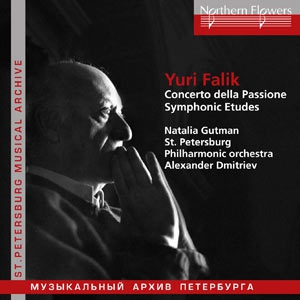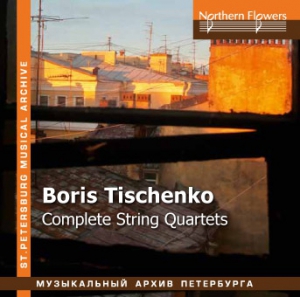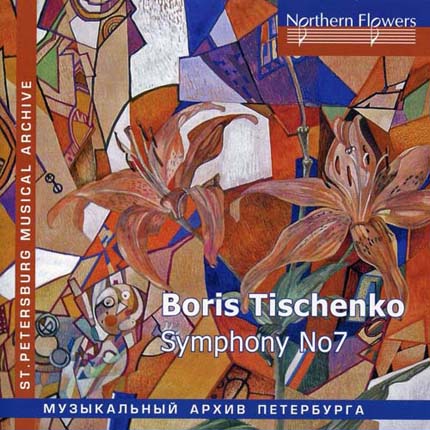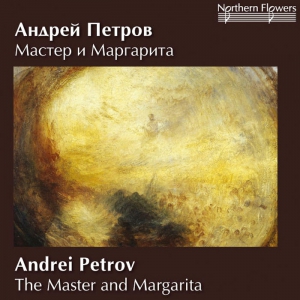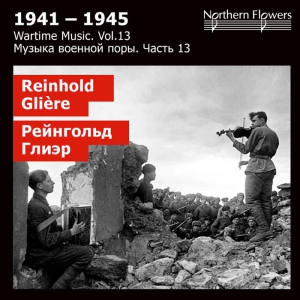Description
St. Petersburg Philarmonic Orchestra,
conductor — Alexander Dmitriev
Natalia Gutman, cello (1)
| Yuri Alexandrovich Falik (b. 1936) | ||
| 1. | Concerto della Passione for cello and orchestra (1988) |
32:20 |
| Lacrimosa |
|
|
| Dies irae |
|
|
| Libera me |
|
|
| Lux aeterna |
|
|
| 2. | Second concerto for the orchesra |
20:21 |
| Forte |
|
|
| Piano | ||
| Solo e Tutti |
|
|
| Motto |
|
|
|
Total time |
52:47 |
|
| St. Petersburg Philarmonic Orchestra, conductor — Alexander Dmitriev Natalia Gutman, cello (1) |
||
|
Yuri Falik belongs to a generation whose creativity, self-identification, and outlook were formed in the Sixties. He is a man of the Thaw era. However, his style is a constantly varying phenomenon, and every new work is a discovery. Falik cannot be flatly referred either to innovators or to traditionalists: he did not invent a new sound system, but he is by no means bound by tradition. A brilliant master easy with all the kinds of the art of composing, he is selective in using new-invented techniques — just as far as they are needed for the concept. He looks for and finds hidden reserves in traditional genres and forms. In the forefront are striking ideas, convincing solutions, catchy intrigue of development in music, and the beauty of sounding.
Yuri Alexandrovich Falik was born on July 30, 1936 in Odessa famous for its musical traditions, for its Opera Theater. His father Alexander Falik was a musician with the Opera, and used to take his son to performances. The gifted boy was plunged into music from his infant days. Everything promised an early rise of the talent, but the war destroyed that beautiful world. His father perished, while mother and son were separated from music for long years in their evacuation in the far Kirghizia. The depth and complexity of his emotional experience in the early childhood affected not only the personality but also the art of Yuri Falik.
His post–war career went fine. He admirably graduated from Leningrad Conservatory, first as cellist (in the classes of A. Shtrimer and M. Rostropovich), and next as composer (with Y. Balkashin and B. Arapov). An enviable career of a virtuoso soloist lay open to him (he is a 1st prize winner of the Helsinki International Cellist Competition), but he abandoned this opportunity for the sake of composition — for the sake of creativity.
Currently, Yuri Falik is Professor (Composition and Instrumentation) of St.Petersburg Conservatoire. Falik successfully combines composing and teaching practice with conducting. He is widely known in and outside Russia. He looks a lucky man, his attitude is pragmatic, he is very charming, and loves success. But first and foremost, Falik is a subtle and deep artist.
Among the compositions by Falik are Les Fourberies de Scapin, an opera buff (after J.-B. Moliere), Orestea, a choreographic tragedy (after Aeschylus), Light Symphony for orchestra, Symphony for string orchestra and percussion, First Concerto for orchestra (after legends of Till Ulenspiegel), Second Concerto for orchestra (“Symphonic Etudes”), Chamber Concerto for three flutes and string orchestra, Concertino for oboe and chamber orchestra, Concertino for bassoon and string orchestra, Concerto for violin and orchestra, Concerto della Passione for cello and symphonic orchestra, Dirge for I. Stravinsky (“Elegiac Music” for 4 trombones and 16 strings), concerto for chorus a cappella (to poems by I. Severianin, M. Tsvetaeva, B. Pasternak, A. Pushkin); Skomorokhs, a concerto for winds and percussion; eight string quartets, Quintet for winds, choral and vocal cycles, etc. The latest large compositions are Liturgical Chants for soloists and chorus а cappella to texts of the Molitvoslov prayer book (1992), Symphony No. 2 (“Kadish”, 1993), Mass for soloists, chorus, and chamber orchestra (1996), “Elegies” Concerto for soprano solo and chorus а cappella (poems by A. Akhmatova and N. Gumilev, 2001), Eighth Quartet (2001).
In Concerto della Passione we face a most paradoxical combination of the requiem genre and the concerto playing genre. Perceiving such ritual genre as funeral mass in the light of free concerto-like utterance is the collision of the opus. The cello takes the lead. Probably the most complicated virtuoso abilities of the instrument are represented. But the cello also takes over the functions of the main voice, the main character. The tones of weeping objective by their nature (Lacrimosa), toccatas (passages seeming to rush about in a closed space and interrupted by “iron” tutti chords (Dies irae)), the bright theme of Lux aeterna — everything is transformed in inspired energetic speech delivered by the meditating and appealing voice of the cello.
The peculiar semantics of the bells in the beginning and at the end of the concerto is also a reference to sacred music. This is one of the timbres enfolding the cello as well as other strings and especially the woodwinds. It is these voices that create a special aura around the nearly incorporeal cello sound in the last movement’s ending. They give you an impression of some fading light, which is eternal and unachievable.
This is what Yuri Falik himself says about the concerto: “The content of the concerto is described by the names of its movements. For me, they are not just initial words of Roman Catholic chants. These words are symbols pronounced by humankind for many hundreds of years — in singing, speech, or whisper. These words are signs of human spiritual existence, standing for Faith, Despair, Repentance, and Hope; they are conceptual words whose universal essence is the basis of many great works of literature, painting, and music.”
Symphonic Etudes (Second Concerto for orchestra, 1977). This is the name given by Robert Schumann to his famous cycle of variations. The very word “etudes” may be construed as an outline sketch — or as a technique exercise. Both Schumann and Falik admit this latter aspect understood as virtuosity itself. The word “symphonic” suggests the depth and scale of the composition. The listener is invited to perceive the Etudes as a symphony, as the genre highest in the instrumental music hierarchy.
The Symphonic Etudes are a tragic composition. Its initial concept is related to the idea of a symphony after Goya’s Capriccios. Fantastical and whimsical as they are, the Capriccios are tragic. At first glance, the playing genre of concerto/etudes contradicts to the deeper tragic intension. But it is just this creative challenge of combining and harmonizing this contradiction that was the composer’s focus.
In their form, the Symphonic Etudes are a so-called one-movement cycle. Contrasting movements follow one another without a break, in a wave, being united by a common theme set out in the beginning. The dramatic tension of the first movement, its exclamations and appeals; the choral with its sacred (Roman Catholic) music associations; gentle lyric of the alto flute (third movement), and even “Morse–code” bursts of tapping (an episode in the Finale) create a rather hinting associative pattern of the concerto. The essence of the music is the rich musical matter not translatable into words. Still, the playing element reminds of itself in the composition: at the very end, the mad power onslaught, the colossal energy seems to deflate, to fall into dust, and the eternal tune of Paganini’s 24th Caprice is sounded as the symbol of playing.
Ekaterina Ruchievskaya
|

